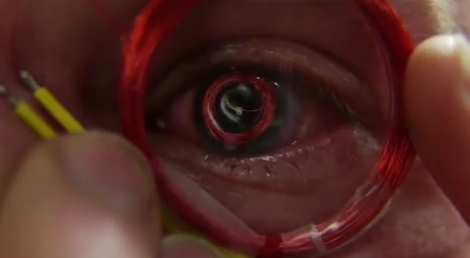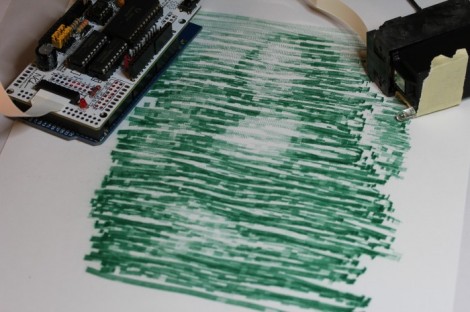[Ben Krasnow] wrote in, saying that every so often a news story appears covering a project in which researchers embed a single pixel LED display inside a contact lens. The most recent article he saw featured a contact-wearing rabbit, and not being one to shy away from damaging his own body in the name of science, he decided to try the experiment on himself.
He started out by soldering a tiny 0402 SMD LED to a hand wound coil, laminating the display between a pair of regular contact lenses. After trying to adhere the lenses to one another using water, he opted to tack the edges together with a pair of hot tweezers, making for a more secure but uncomfortable piece of eyewear. The LED is powered by a simple inductive coil he put together, which uses a spark gap transmitter to flash the LED on and off.
If you’re not freaked out by people sticking things in their eyes, be sure to check out the video below to see [Ben’s] augmented contact lens in action. While it might not give him Terminator-like vision, it’s pretty awesome considering he pieced it together in his workshop in his spare time.
Continue reading “[Ben Krasnow] Sticks LEDs In His Contacts Just For Kicks”


















